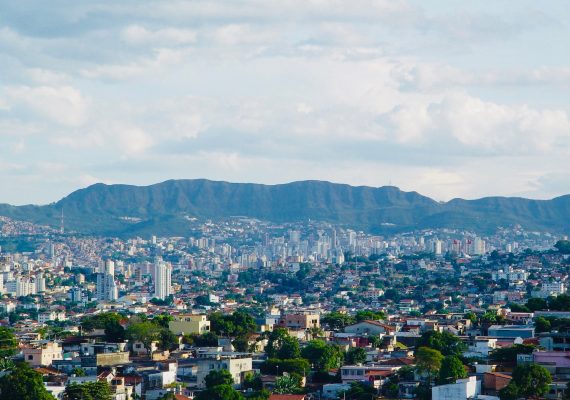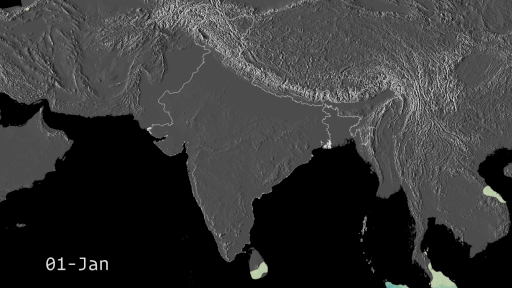India for Kids: Learn about Tigers and the Royal Heritage of Mysore
In this episode of Go With Nugget for Kids, we are heading to the city of Mysore (Mysuru) in southern India. We’re meeting 11-year-old Ahan, who takes us on a tour of the royal heritage and unique wildlife of his hometown. Listen or read on, and learn about amazing Indian animals, the fascinating Mysore Kingdom of ancient India, and delicious Indian food.

 22 min
22 minINDIA GEOGRAPHY: WHERE IN INDIA IS MYSORE?
India is a country in Southeast Asia. It’s the second most populated country in the world, with more than 1.3 billion people. That’s more than 4 times the population of the United States! Mysore is a town in southern India, in a state called Karnataka. Karnataka is the largest state in southern India and it is known for its rich history, beautiful Hampi temples, colorful festivals and some of the most diverse wildlife in India.
If you want your kids to learn more about the incredible Indian animals that call Karnataka home, check out Wild Karnataka. Narrated by Sir David Attenborough, this documentary brings together 20 of India’s best wildlife cinematographers.
INDIA CLIMATE: THE IMPACT OF THE MONSOON SEASON
The Indian climate varies greatly throughout the country. You can find wet tropics as well as deserts and high-altitude mountainous regions. Mysore has what is called a tropical savanna climate, which is characterized by a distinct dry season and a wet rainy season. This rainy season is created by the Southeast Asian monsoon, a wind pattern that reverses direction between winter and summer. In Mysore, the monsoon brings wet summers and dry winters.
A visualisation showing the onset and the retreat of the South Asian Monsoon.
Photo: Mdmadhu | CC BY-SA
ANCIENT INDIA FOR KIDS: THE MYSORE KINGDOM

The Mysore Palace was the royal seat of the maharajas of Mysore.
Photo: Image by Bishnu Sarangi from Pixabay
The Kingdom of Mysore is a kingdom that existed for over 500 years in southern India. When the Indian Union was formed in 1947, as part of India’s independence from Great Britain, the Mysore Kingdom came to an end. The center of the kingdom is what’s known today as the city of Mysuru or Mysore. The city changed its official name from Mysore to Mysuru in 2014, but many still call it Mysore.

Ahan in front of the gate to the Mysore Palace.
Photo: Mahesh Ballal
Mysuru is a beautiful city, set at the foot of the Chamundi Hills and it’s often referred to as the City of Palaces. There are seven palaces in total. The most important one is the Mysore Palace, which used to be where the maharajas and the royal family lived. The first palace was built in the 14th century, but was later struck by lightning and had to be rebuilt. The palace was rebuilt a few more times over the past centuries. The current Mysore Palace was built in 1912, after the previous one burnt down during the wedding ceremony of Princess Jayalakshmmanni. Mysore Palace is one of the most important tourist attractions in India (after the famous Taj Mahal) and attracts more than 6 million visitors each year. If you want to take a 360-degree tour of Mysore Palace, click here!

A view inside the Mysore Temple.
Photo: Ashim D’Silva on Unsplash

Another place to visit is the Chamundeshwari Temple on the Chamundi Hills. Photo: Akshat Vats on Unsplash
INDIAN CULTURE FOR KIDS: DUSSEHRA FESTIVAL


Decorated elephants during the Dussehra celebration.
Photos: @chirag_raj_
Dussehra is a 10-day Hindu festival that celebrates the victory of good over evil. It has been celebrated in the state of Karnataka for over 400 years. During the festival, the Mysore Palace is lit up by more than 100,000 lights, and there is a huge parade through the city, with dancers and music. The highlight of the parade is the elephant procession that carries the idol of the goddess Chamunda. For the best view of the palace lit up, Ahan suggests you head to the top of Chamundi Hills.

Mysore Palace is glowing with thousands of lights during the Dussehra festival.
Photo: @chirag_raj_
See the Mysore Palace lit up during the 10-day Dussehra festival.
INDIAN CULTURE FOR KIDS: LOCAL FOODS

Some traditional Indian sweets, including Mysore pak and vada.
Photo: Image by Indianistic from Pixabay
Mysore has many traditional foods. During our chat with Ahan, he shared a few that are well known in his hometown.
IDLI

Vada and idli served with sambar and chutney are popular for breakfast.
Photo: Ahan
MYSORE PAK
Mysore pak is a traditional Indian dessert often served for special occasions. Legend has it that it was invented by the chef of the Mysore maharaja. The maharaja loved food and was almost like a modern-day foodie. Mysore pak is made of sugar, chickpea flour, cardamom and a lot of ghee. Ghee is the Hindi word for fat. It’s basically the fat that is left over after the water and milk solids are taken out of the butter. It is very common in traditional Indian cuisine and favored by many cooks, because it doesn’t burn as easily as butter. And, it has a slightly nutty flavor that adds to the deliciousness of Mysore pak.
Here’s a recipe for making Mysore pak at home.

Mysore pak is messy, sticky and super delicious.
Photo: Times of India
MYSORE MASALA DOSA
Dosas are crepe-like pancakes made out of rice and lentil flour. Originally from southern India, they are now popular all throughout India, but every region has its own local spin on them. In Mysore, dosas are stuffed with potatoes and red chutney. The red chutney is made from red chilis, onions and garlic. The chutney makes the dosa so spicy that Ahan says you need to drink A LOT of water after you eat it. He prefers eating Mysore masala dosa early in the day, or else he has to get up all through the night to quench his thirst.


Ahan eating a Mysore masala dosa.
Photo: Ahan
INDIAN ANIMALS: A VISIT TO THE BANDIPUR TIGER RESERVE

Tiger on the road at Bandipur Tiger Reserve.
Photo: Mahesh Ballal
India is home to 80% of the world’s tiger population, and the Bandipur Tiger Reserve is one of the 50 tiger reserves throughout the country. Back in the day, Bandipur used to be the hunting reserve for the maharajas, but today it’s dedicated to protecting and growing its endangered tiger population. Some of the biggest dangers to tigers are habitat loss and poaching. Sadly, every year, hunters try to kill tigers to sell their fur and bones on the black market. The rangers at Bandipur regularly patrol the park on foot and by jeep to catch poachers. During monsoon season, they even use elephants to patrol the most critical parts of the 220-km (136.7-miles) park border. This conservation work at Bandipur creates a safe habitat for tigers and a lot of other animals that call the preserve their home. In addition to tigers, you can find elephants, leopards, sloth bears, gaurs (which is a type of bison), sambar deer, monkeys, wild dogs and lots of birds. One of the birds that is native to India, and that many of you may have seen at the zoo, is the peacock.

A gaur chilling out at Bandipur.
Photo: Mahesh Ballal

An Indian elephant at Bandipur.
Photo: Mahesh Ballal

A herd of elephants enjoying the river.
Photo: Mahesh Ballal

A peacock getting a view from above at Bandipur.
Photo: Ganesh Bhosale on Unsplash
Watch the incredible Indian wildlife at Bandipur.
KEEP IN MIND
As good travelers, we always want to keep our distance from wild animals and give them their space so we don’t scare them. And, we never ever want to feed wild animals.

A male sambar deer at Bandipur.
Photo: Mahesh Ballal

A gray langur approaching a watering hole.
Photo: Mahesh Ballal
INDIAN ANIMALS: MYSORE ZOO
The maharaja not only created the hunting reserve that is now Bandipur National Park, he also founded the Mysore Zoo. Today, the zoo is home to over 168 species, including komodo dragons, crocodiles, tigers and leopards. In order to protect the animals in its care, the zoo doesn’t allow visitors to keep any plastic wrappers from food bought within the zoo. Instead, you have to surrender any packaging as you buy your food. This way, no trash can get into the animal enclosures and can accidentally be mistaken for food.
FUN FACT: A WILD LEOPARD VISITED THE ZOO
In 2017, an 18-month-old leopard cub made its way into the zoo. Nobody knows for sure where it came from, but leopards are native to southern India and can be found in the forests and hills surrounding the city of Mysore.

A leopard sleeping in a tree.
Photo: Mahesh Ballal
INDIA FOR KIDS: MYSORE’S FAMOUS KRS DAM

A view of Brindavan Garden with the KRS Dam in the background.
Photo: Amarrg for English Wikipedia under CC BY-SA 3.0
In addition to the Mysore Zoo, the maharaja also commissioned the construction of the famous KRS Dam (Krishna Raja Sagara Dam). Construction of the dam started in 1911, and it took over 10,000 workers and 20 years to complete it. The KRS Dam in Mysore was finished just around the same time as the Hoover Dam in the U.S. But unlike the Hoover Dam, which used lots of cement and concrete, the KRS Dam used surki mortar, because back then cement wasn’t available in India. Surki mortar is a mix of water and ground-up bricks. The dam plays an important role in helping farmers with the irrigation of their crops, especially during the dry winter months. Irrigation is a way to water crops on a farm either by channels or pipes.
Here is a great video that shows an aerial view of the KRS dam and surrounding areas.
SPECIAL THANKS
A big thank you to Ahan and his family for sharing with us so much about his culture, his hometown and the Bandipur Tiger Preserve.
The theme song for Go With Nugget for Kids was written and composed by Andrew & Polly from the musical kids podcast Ear Snacks.
Go With Nugget for Kids is a proud member of Kids Listen, an international organization of advocates for high quality audio content for children. If you love kids podcast, go check them out!
Go With Nugget for Kids is part of Nugget, a global community for parents to share and discover unique travel itineraries for memorable family vacations.
MORE EPISODES FOR KIDS AND PARENTS

 0 min
0 minAustralia for Kids: Living Between the Rainforest and the Reef
Meet 9-year-old Yindali and discover what it’s like to be a kid in Tropical North Queensland, Australia, living where the rainforest meets the sea.

 81 min
81 minThings to Do in NYC With Kids: The Ultimate Vacation Guide for Families
Discover how to explore New York City like a local, and get the most out of what the city has to offer kids.

 22 min
22 minBrazil for Kids: Explore Gems and Minerals, Rivers and Wildlife
Meet 12-year-old Theo and discover what it’s like to be a kid in Belo Horizonte, Brazil. Learn about amazing rocks, gemstones and fishing for piranhas!














